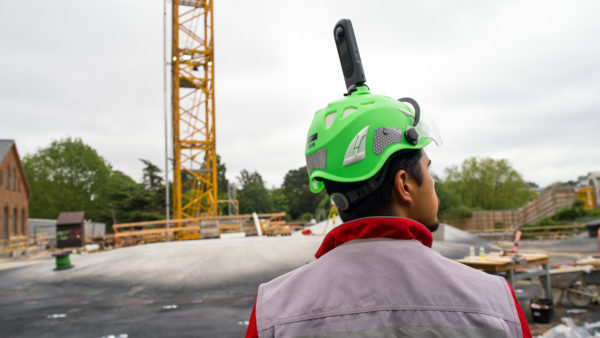HS1 Ltd is developing augmented reality (AR) technology that will streamline how faults are detected and repaired.
The University of Sheffield Advanced Manufacturing Research Centre (AMRC), part of the High Value Manufacturing (HVM) Catapult, is working with HS1 Ltd to create a system which will monitor real-time performance of station services at St Pancras International. It will allow swift detection and repair of faults within the station’s lifts, escalators and travelators, as well as signalling equipment along the high-speed line.
Sensors will pick up and relay faults back to maintenance teams via a private 5G network. Maintenance engineers can then be swiftly dispatched to repair the faults thus saving time and money, and efficiently managing the railway and station.
The aim of the project is to enable the flow of data and information between on-site and remote maintenance teams. This will help HS1 Ltd develop its knowledge and understanding of new maintenance methods. This will also improve training and competency and result in efficiency and performance benefits for the network, which will ultimately lead to an enhanced experience for passengers and customers.
“The layering of AR, sensor data and a private 5G network to create a complete solution like this is extremely advanced. It will be the first example of a rail infrastructure with this level of technology,” said Professor Rab Scott, head of digital at the University of Sheffield AMRC.
“Simply, having access to sensor data on an AR headset, in real time, will allow engineers at St Pancras to do their jobs much better. It will provide maintainers accurate information much faster and more reliably, thus making the process of trackside maintenance much more effective.”
The project also aims to support the government’s National Digital Twin programme (NDTp), led by the Centre for Digital Built Britain.
Michael Lewis, digital theme lead at the University of Sheffield AMRC, said: “What we have been able to do is apply the learning and expertise from manufacturing in a new environment, but then take it even further. Indeed, there are a lot of manufacturing companies who would dream of this kind of capability.
“It’s exciting to think of other ways the rail sector could follow the lead of HS1 Ltd by embracing Industry 4.0 technologies and adopting best practice from the manufacturing sector.”
The project is funded by Innovate UK, in partnership with Pauley Group, Network Rail (High Speed), Athonet UK and the AMRC.
Dyan Crowther, CEO of HS1 Ltd, said: “At HS1 Ltd we are always looking at ways in which we can improve the UK’s only high-speed rail system. The system will not only create a more reliable rail network, but will allow our expert teams to maintain social distancing guidelines when responding to jobs. Thanks to Innovate UK and our partners we are able to lead the way in revolutionising London’s railway stations post-Covid.”
HS1 Ltd has the 30-year concession to own and operate HS1, the UK’s first section of high-speed rail between London and the Channel Tunnel, as well as the stations along the route: St Pancras International, Stratford International, Ebbsfleet International and Ashford International.
Image: 45885238 © Ajv123ajv | Dreamstime.com











